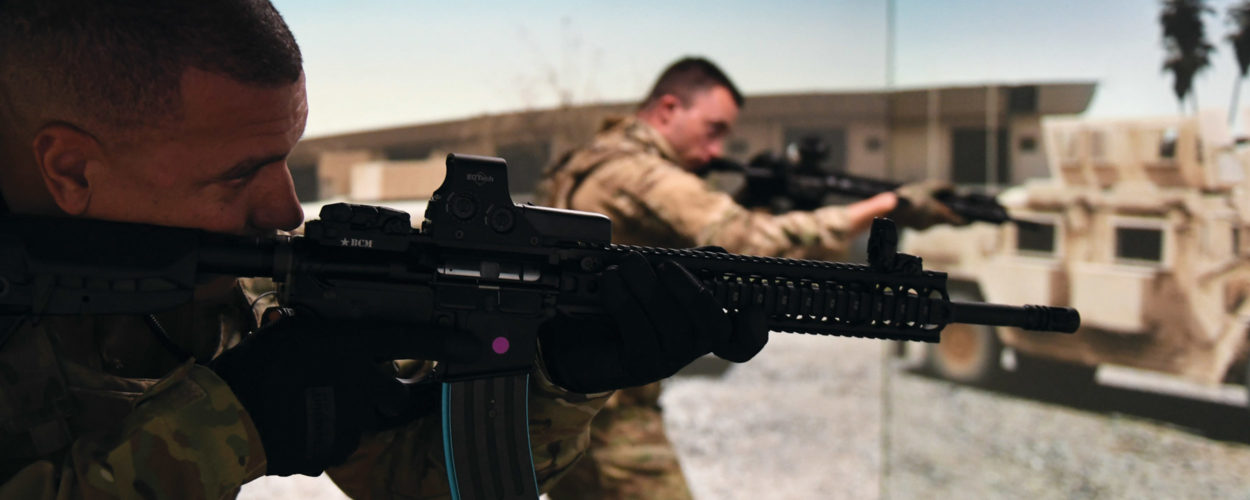Military Active Threats
Military Combat Simulator for Military Active Threat Training
Types of Active Threats
The Potential Hazards to Troops
Bomb Threats and Explosions
Overseas, Improvised Explosive Devices (IEDs) are a common way that adversary troops attempt to cause a large number of casualties. Explosives are used in a variety of ways. They can be Vehicle-Borne Improvised Explosive Device (VBIED), set as mines, launched/thrown grenades, or strapped to an individual for a suicide bombing. An example of a tragic mass casualty event by suicide bombing is the Kabul airport bombing of 2021 that killed 13 U.S. troops and dozens of Afghan civilians.
There are times when the attacker is not physically around for the detonation of an explosive, especially when mines and hidden bombs are planted in specific high traffic or strategic locations. The bomb is either detonated remotely or tripped by movement within a certain radius or pressure plates.
Gun Attacks
As the name implies, firearms are used in this type of active threat. While not as commonly used as explosives in an overseas setting, semi- or automatic weapons have been used by the opposition in active threats. Firearms are the frequently used method in green-on-blue attacks, however.
In the past, there have been unfortunate incidents where the active threat is a service member from your own base. One such incident is the Fort Hood mass shooting in 2009 that killed 13 people. The gunman was an Army Major who opened fire upon soldiers in the Fort Hood processing center.
Military Active Threat Training Preparation
Military Combat Simulator Practice for Engaging an Active Threat
From rapid situation assessment to med evac after threat neutralization, there are steps to take to ensure proper response and follow-through. With a military combat simulator and synthetic military active threat training for soldiers and warfighters, everything from engagement to debrief is possible. Servicemembers can practice situational awareness, response dynamics, communication, and correct shot placement within VirTra’s military training combat simulators.
Both recognizing the active threat and eliminating it are the key components of the military active threat training scenarios. As the content is developed by subject matter experts with an understanding of combat readiness, VirTra ensures immersion and knowledge takeaways. Drop-in laser recoil kits allow military personnel to use their own duty weapon within the synthetic environment, allowing the use of everything from small arms to heavy weapons. Combined with scenarios and Marksmanship range programs, VirTra’s technology aims to train service members to the highest level of performance to protect our country better.
To learn more about military active threat training and VirTra’s military combat simulator, contact a specialist by clicking the button below.






